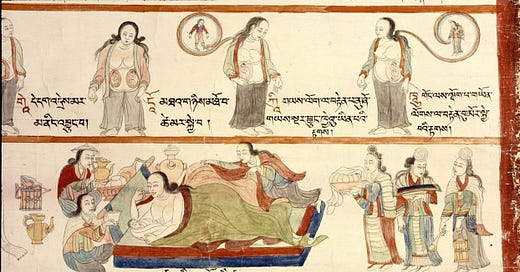postpartum secrets from the premodern world
how I stave off depression, hair loss, and hormonal chaos after birth
I refer to the period of time following the birth of my first kid as my trial by fire.
New motherhood thrust me into an awkward phase rivaled only by puberty. Three months postpartum, my skin suddenly erupted in deep, sore, bleeding, disfiguring cystic acne that covered my entire face. My hair, once red, curly, and plentiful, turned dark and fell out in handfuls, leaving bald patches not only in the normal spots at the temple but throughout my whole scalp. My whole body seemed to swell, even six months postpartum. That following year, I had two miscarriages. Everything felt as if it were falling apart – because it was!
This unfortunate experience inspired curiosity: What’s wrong with me? Is this normal? Was it always like this? For everyone? How could human civilization sustain itself if every child born means its mother not only endures hell through the pains of birth, but also permanent, disfiguring ill health? Where’s the bliss I was promised? What am I missing?
On one hand, maternal sacrifice is built into the very fabric of reality. The built-in difficulty is a fact that must be confronted with fortitude; it also bonds us to our children. But how much is too much? At what point does heroic fortitude become stubborn foolhardiness? At what point is it licit to look around and wonder if the suffering you endure is the result of some easily remedied ignorance or injustice – and so, warrants a solution? At what point is it okay to seek help?
Keep reading with a 7-day free trial
Subscribe to Helen Roy Writes to keep reading this post and get 7 days of free access to the full post archives.





